Last updated:
Refereed articles
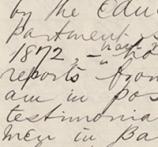
Edward George Wollaston was born in South Australia in 1857 and died at Murrumbeena in 1935. His life spanned decades of educational change in Victoria, when National and Denominational schools were brought together under the Common Schools Act of 1862; education became free, compulsory and secular through the Education Act of 1872; and the 1883 Public Service Act gave teachers the status of public servants. Wollaston’s career provides an insight into the personal consequences of these measures that formalised methods of appointment and promotion, and saw seniority and merit become the basis for advancement rather than family connections or political patronage. His story is that of one individual’s encounter with an intransigent administration, rigid bureaucratic procedures, political expediency and a system that demanded unquestioning compliance. It also demonstrates Edward’s own persistence and determination, his various strengths and foibles as a teacher and, most importantly, his ongoing quest for official redress of a perceived injustice, a case that became known as the ‘Wollaston Affair’. An honourable man from a religious family, Edward was fined £5 and severely censured by Duncan Gillies, Minister of Public Instruction, in 1884. An indelible mark was put against his career and still exists in his files. For forty years he tried to clear his name, and, in so doing, engaged in a dispute with the Department of Education that was firmly grounded in contemporary debates and, in particular, in the contested area of state education and religion.
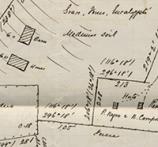
A Micro-History Approach
Expand SummaryFollowing the discovery of gold around Walhalla in 1863, thousands of men and women flocked to the district hoping to make their fortune. Among them were hundreds of Italians and Swiss-Italians. The men worked mostly in the timber industry servicing the needs of local gold mines, but others took up different occupations. Micro-histories of small groups and the individuals within them help to challenge accepted theories. In Southern Europeans in Australia, Charles Price has argued that migrant settlements often occurred in certain areas because ‘pioneer’ or early arrivals from particular nationalities, regions or locations became involved in the same type of work, which, in turn, led to the ‘accidental’ development of migrant communities. In this article, I argue that application of Price’s model to Walhalla’s Italians makes the settlement appear one-dimensional and rigid in its composition when it was, in fact, a dynamic and interactive environment. Although offering an excellent starting point, his theory remains incomplete and does not allow for the individuality of the men and women involved, nor for the flexibility and versatility they demonstrated in their quest for prosperity. Drawing on a vast array of primary source material, including goldmining, Crown Lands and probate files, I use Vittorio Campagnolo as a case study to present an alternative scenario.
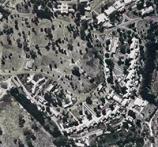
Psychiatrists and Victorian Public Administration from the 1940s to 1990s
Expand SummaryThis paper offers an overview of public policy in Victoria as it changed its approach to the treatment and prevention of mental illness from the late 1940s to the 1990s. While this has come to be understood as a move away from institutional to community care, I argue that there is still a great deal to understand about how government policy managed this process and how the concepts beneath community mental health have been applied. In this paper I look at the role of psychiatry and suggest that during this period there were a range of ways psychiatrists came to influence public policy. I pay particular attention to the perspectives of the first chairman of the Mental Hygiene Authority, the psychiatrist Eric Cunningham Dax (1908-2008). I hope to offer insights into the way debates and perspectives about mental health evolved in Victoria by looking at government archives from the period and contextualising them within the internal debates within psychiatry. There are three factors that are suggested as defining features in this policy environment. The first was the move in the locus of treatment from a hospital setting to a community setting, fuelled by improved medication and the high costs of maintaining old and large separate institutions. The second was the changing role of psychiatrists, in response to their increased role in the community. The third was the administrative amalgamation of health and mental health from the 1970s which enabled a generic model of health promotion to become a public policy priority.
The paper draws on the available public records to describe the story of how government modified its approaches over time. Records which reflect these policy debates have been accessed through Public Record Office Victoria, the Department of Human Services, and the Royal Australian and New Zealand College of Psychiatrists. It concludes with a recommendation that further research be conducted in this area across State and Commonwealth governments to identify how government achieved a shift in mental health care into the community and what this meant for services, staff and patients.
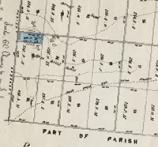
The contemporary landscape of the northern plains of Victoria is the outcome of cultural interaction with an unpredictable physical environment. In this article I argue that settlement visions for the northern plains in the period 1836-1930 were shaped not only by political and economic imperatives but also by the climatic variations of a semi-arid country. This article examines the history of one particular section of land, and contends that settlement visions developed around ideas of scarcity and abundance have had far-reaching consequences for plains’ dwellers and for the country itself.
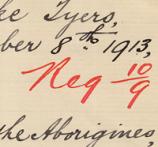
The Aboriginal Campaign against Caroline Bulmer's Eviction from Lake Tyers Aboriginal Station, 1913-14
Expand SummaryBetween 1913 and 1914 the residents of the Lake Tyers Aboriginal Station waged a campaign to allow Caroline Bulmer, the widow of their late missionary, to remain on the station with them. Preparing two separate petitions, the first to the Victorian Board for the Protection of Aborigines, and the second to the Governor of Victoria, the residents sought to make themselves ‘understood’, as they put it, to the authorities at a time of great uncertainty about their future. This was a critical moment in the history of Aboriginal administration in Victoria, as the State garnered increasing and encompassing powers to control Aboriginal people and their land. Mrs Bulmer’s continued residence was vehemently opposed by the Board’s appointed manager of the reserve, and his hostility to the widow can tell us something about the lives of those who were forced to live under his administration. While the petitioners were unsuccessful, the story of their campaign, buried in the PROV archives, brings to light a forgotten, and perhaps unexpected, episode of cross-cultural collaboration on the issue of land and policy. Drawing on recent scholarship on the Indigenous use of writing as a tool of resistance, this article highlights the complexity of relationships between Aboriginal and non-Aboriginal people, and reveals the persistence of Aboriginal efforts to determine their own future and to assert their right to do so.
Forum articles

In 1891, women’s suffrage advocates collected the signatures of some 30,000 Victorians, all supporting the vote for women. Quickly dubbed the ‘Monster Petition’, it remains one of the largest documents ever presented to Parliament. Some of the most famous names in the suffrage movement grace the ‘Monster’, but the majority of women who signed it were not well-known names. This paper explores the lives of seven women who were left out of the history books. Working-class and living in Davis Street, North Carlton, Agnes, Eliza, Helen, Ellen, Sarah, Ada and Jessie were not ‘history makers’, yet they still made history. Their stories paint a fuller, more accurate picture of women’s history and the history of the suffrage movement in Victoria. This paper argues for the significance of all historical figures, and suggests that the smallest of us can play a role in major historical events.
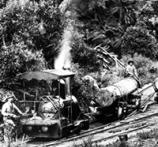
Teaching at an Otways Outpost
Expand SummaryThe Victorian Government introduced free, secular, compulsory education in 1872. With the rapid expansion of mining, farming and forest industries in the following years, settlement spread to increasingly distant and remote areas of the colony, and hundreds of small bush schools were established to educate the growing numbers of young children in these ‘pioneer’ districts. Otway Saw Mills was typical of such places. Established in 1909 at Henry’s No. 1 Mill in the Otway Ranges, the school was home to fifteen successive teachers during its nineteen years of operation. Correspondence between the teachers and bureaucrats in Melbourne, preserved by Public Record Office Victoria, reveals many of the challenges and hardships faced by ‘bush schoolies’ in their remote and often lonely teaching lives.

Select Applicants for the Position of Deputy Registrar for Collingwood in 1864
Expand SummaryAmong the inward registered correspondence of the Chief Secretary’s Department for the years 1863-64 is a group of letters by applicants for the position of Deputy Registrar for the district of Collingwood. This article explores the very different life stories behind three of these applications, including that of the successful applicant, Henry William Mortimer. The episode highlights the qualities that favoured one candidate over another in the selection process at the time, and demonstrates the importance of social, economic and political connections – particularly the need for a personal recommendation by an ‘Honourable Gentleman’.
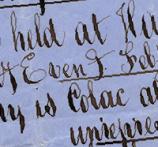
Snapshot of a Colonial Settlement
Expand SummaryIt began as a challenge: the extent to which I could identify the people living in my home district of Colac in 1856-57, the first year for which there was any sort of list with which to begin. Using this list, the electoral roll current for twelve months, I found it led to many other records. The assumption that, to be on the roll with its property qualification, most of the men would have been established in the district and probably married, led to indexes of marriages and births. The birth certificates subsequently purchased revealed many more names – wives, other children, midwives, informants. Family histories identified some deaths, leading to certificates which gave more names than that of the subject, which were then added to the list. Accidental deaths were investigated by an inquest jury – more men. Did any of them have wives? To the immigration indexes to see what could be found! Although there was no local government in my area there were court and school records to follow up. Living in the district also gave me easy access to local historical groups with family files and useful indexes to investigate as well as names to check in formal records.
It became clear that it was indeed possible to find a range of people who roughly corresponded to those found by the census when it was taken in March 1857. By then the database being built up was also beginning to reveal more than had been anticipated. The length of time people had been in the colony was one feature which showed clearly the impact of the gold rushes on what had been previously a little pastoral settlement. Areas of origin and methods of arrival suggested other social divisions in the community.
The people in my database began to acquire individuality and their interactions could be seen in this light. In many of the records of local institutions which then came to life, the forging of community spirit could be seen. The relevance of local events in the context of the wider theatre of Victorian colonial life also became clear. While this proved to be a successful endeavour, one which unexpectedly led to the publication of a book, Year of hope: Colac in 1857, it could, for that year, be more difficult for larger areas (Colac in 1856-57 was the smallest electorate in the colony). However, the study of a slice of the population at a chosen time could clearly reap unexpected rewards.

Rosenthal, Aronson & Company
Expand SummaryIn the years after the gold rush, as alluvial gold became scarce, many enterprising men in Victoria saw the opportunity to develop secondary industries. One of these businesses was Rosenthal, Aronson & Company, Manufacturing Jewellers of Melbourne. This paper documents the history of the company, from David Rosenthal’s arrival in 1852 until his retirement and the continuation of the firm in 1903 as Aronson & Co. The business closed in 1927, just priorto the Great Depression.
Research for this paper has shown the importance of original documents and contemporary publications when recreating stories of the past. In particular, the Argus newspaper contains regular reports on the activities of the firm and its partners. Its articles on the introduction of tariff protection show how this legislation benefited firms like Rosenthal, Aronson and Co. From its Law Reports it was possible to identify the two criminal cases involving thefts from the manufactory. This then led to a visit to PROV to examine the Criminal Trial Briefs (VPRS 30/P) and to locate the appropriate court transcripts. The second case, The Queen v. Dawes, also contained measured coloured drawings of the interior of the premises. Other documents held by the National Archives of Australia and by PROV helped to fill out the story of a successful business that flourished as part of ‘Marvellous Melbourne’.
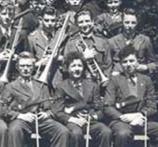
Northcote High School during the 1930s
Expand SummaryThe Great Depression hit just as state secondary education was becoming established in Victoria. At Northcote High School, which opened as a boys-only school in 1929, the effects of a 26 per cent unemployment rate in the suburb were particularly hard felt. During 1931 and 1932 the school received dozens of letters from parents pleading for leniency on fees they could not pay. The problem was compounded further when in 1933 the Victorian Government, under pressure to cut its education expenditure, decided to increase high school fees. The resulting decline in enrolments was dramatic. From 516 in 1930, student numbers at Northcote High School dropped to 406 by 1934 and the number of year 10 students more than halved. Distressed by the loss of its students, the school sent deputations to the government in 1933 and 1934 asking that fees be cut. The request was to no avail, dashing the educational hopes of many young students forced to leave the school. Enrolment numbers at Northcote High School, as in the rest of the state, did not fully recover until after the Second World War when fees for secondary education were finally abolished.
Material in the Public Record Office Victoria archival collection contains words and descriptions that reflect attitudes and government policies at different times which may be insensitive and upsetting
Aboriginal and Torres Strait Islander Peoples should be aware the collection and website may contain images, voices and names of deceased persons.
PROV provides advice to researchers wishing to access, publish or re-use records about Aboriginal Peoples
